File this under things you can do during the COVID-19 quarantine – relax into this expanse of extra time, and learn about an artist you might not know: Julie Mehretu, whose mid-career retrospective at LACMA, has been noted as one of the most important shows in the country this spring.
Sadly, the museum is closed and the show is scheduled to travel to the Whitney after March 22, where it will run from late June through September 2020. But here’s a round up that will get you up to speed. Mehretu is a relatively young artist (not yet fifty) who won a MacArthur “Genius grant” when she was thirty four, and is now one of the highest paid female artists in the world. Now is a time when the world’s most influential museums are going through a period of redefinition – expanding the definition of what they deem “important, ” as laid out in this analysis by the New York Times’ Holland Cotter. And Mehretu, as a gay, Ethipian woman whose work is beautiful, emotional, political and fearless, is smack at the center of the conversation.
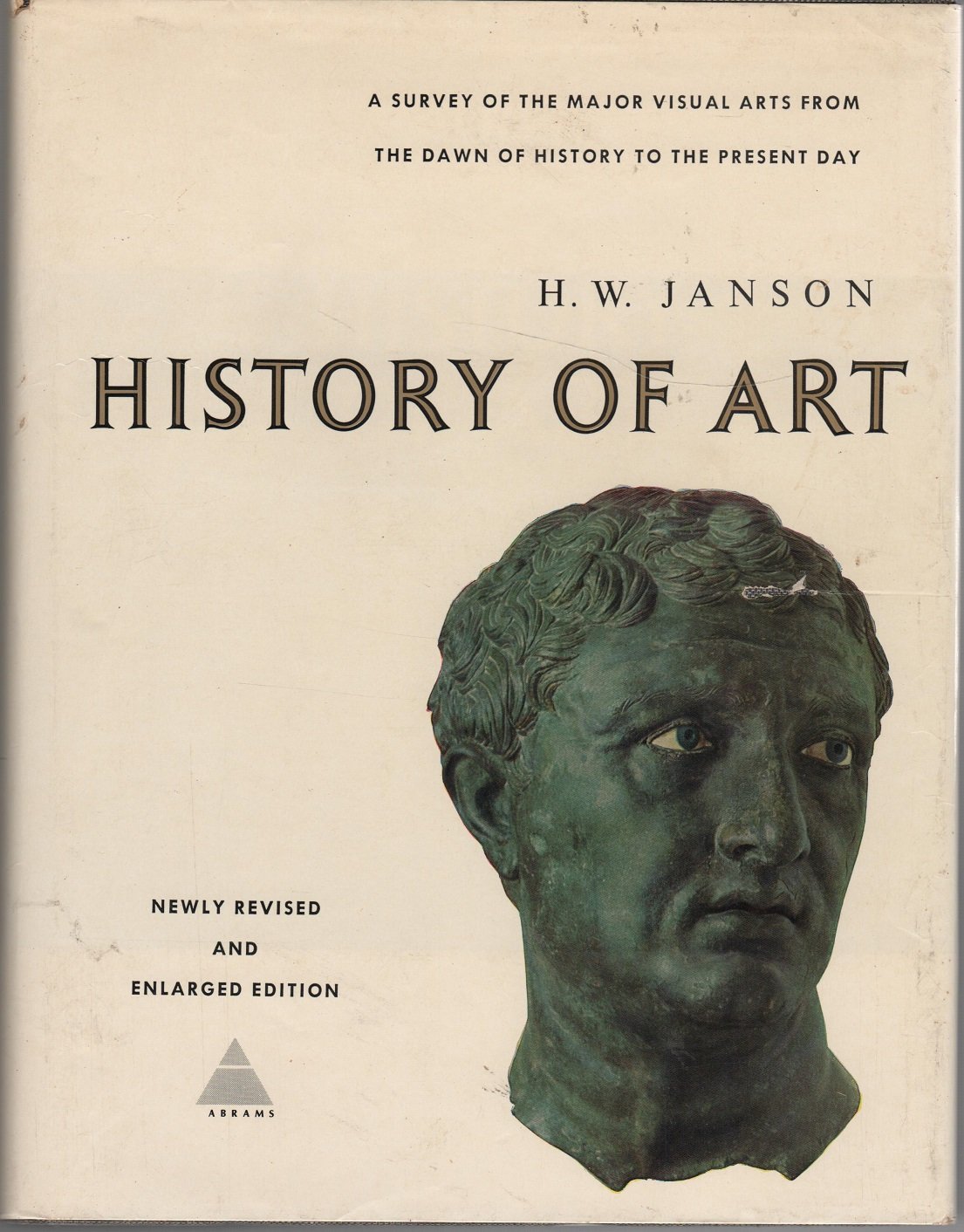 Remember Janson and Art 101, learning about the world’s great art by scrutinizing a professor’s slide show in a dark lecture hall? Even better was the frisson of recognizing those beloved pieces IRL – feeling immediately that that the actual works of art exceeded all you’d learned. I’m pretty sure Mehretu would blow Jansen’s mind and hope that when you finally get to see her work in person, you’ll feel that amazing thrill of recognition and awe.
Remember Janson and Art 101, learning about the world’s great art by scrutinizing a professor’s slide show in a dark lecture hall? Even better was the frisson of recognizing those beloved pieces IRL – feeling immediately that that the actual works of art exceeded all you’d learned. I’m pretty sure Mehretu would blow Jansen’s mind and hope that when you finally get to see her work in person, you’ll feel that amazing thrill of recognition and awe.
GET TO KNOW JULIE:
Spend ten minutes watching this video showing the artist at work on two large-scale canvases made for San Francisco’s Museum of Modern Art. Julie she talks about “how to be an artist in this political moment” and you quickly realize the intelligence of her process. She completed the SFMOMA commissions in a church she rented in Harlem, and had to paint from a forklift; you’ll see a slew of workers employed to actually transfer marks onto the canvas. The artist talks about how this work confronts the history of American landscape painting, and is a commentary on the Gold Rush, which she believes is echoed in contemporary terms around Silicon Valley. For additional details, here is an article about this commission and her work with Moran.
Three main hallmarks of her work are clear: her primary interest is to interpret current politics, her marks are layered and precise, and the scale is large. Ted Loos, in the Wall Street Journal’s article about the LACMA show says:
“There are few artists who follow the news as closely as the painter Julie Mehretu does, and fewer still who directly mine it for their work. But not all viewers of her immense abstract pieces realize it.”
LACMA’s SHOW
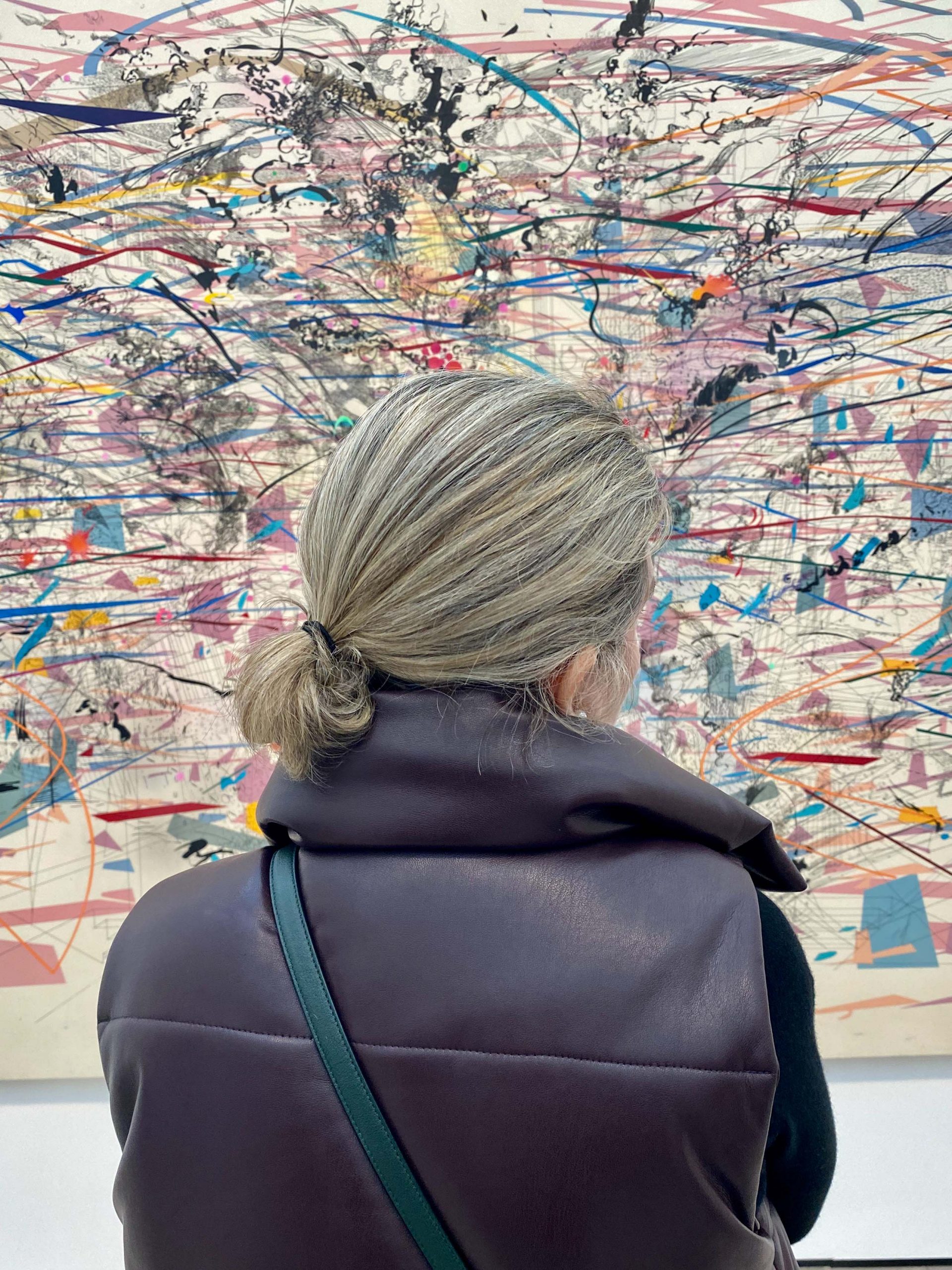
Here, from the LACMA site, is a short video (under a minute) that gives a good feeling for the scale and color of this work, as it was installed at LACMA.
I recommend reading this article by Daniel Gerwin from Hyperallergenic for both context for Julie’s work and apt descriptions of why the work is so important internationally. I particularly like this observation, which helps to understand the importance of this artist’s work in the world today.
“The paintings are at once meditations, elegies, and celebrations of citizens’ attempts to resist political and economic tyranny. Ironically, their grand monumentality and unparalleled elegance is doubtless a reason Mehretu appeals to global banks and other institutions with an interest in projecting power.”
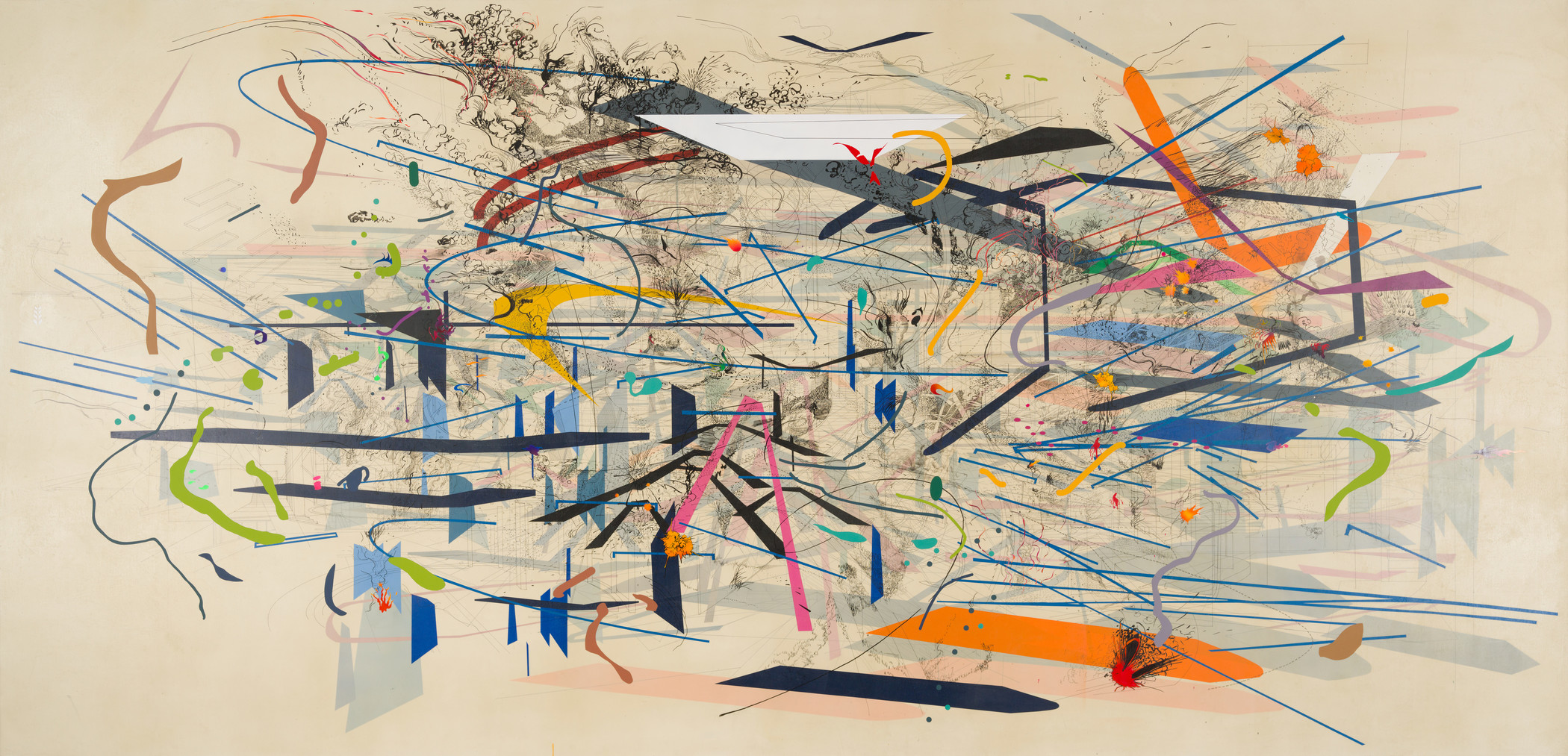
Julie Mehretu, Retopistics: A Renegade Excavation, 2001, ink and acrylic on canvas, 101 1/2 × 208 1/2 in., Crystal Bridges Museum of American Art, Bentonville, AR; 2013.28, © Julie Mehretu, photograph by Edward C. Robinson III
Julie’s parents were map makers, and you can see this profound influence in her early markings – also, it’s important to learn that she makes one layer of marks and then paints a layer of acrylic over that first layer, rendering it a lighter gray black.
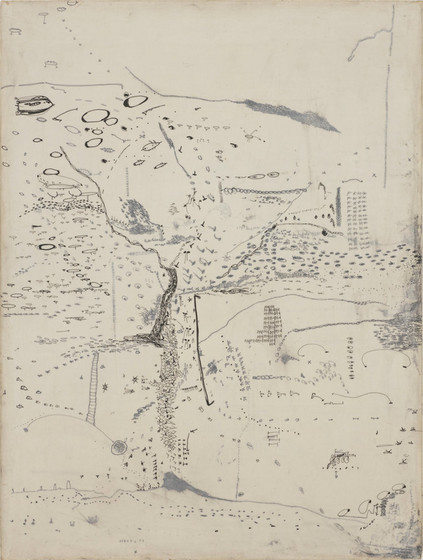
Julie Mehretu, Untitled (two), 1996, ink and acrylic on canvas, 22 × 18 in., private collection, © Julie Mehretu, photograph by Tom Powel Imaging
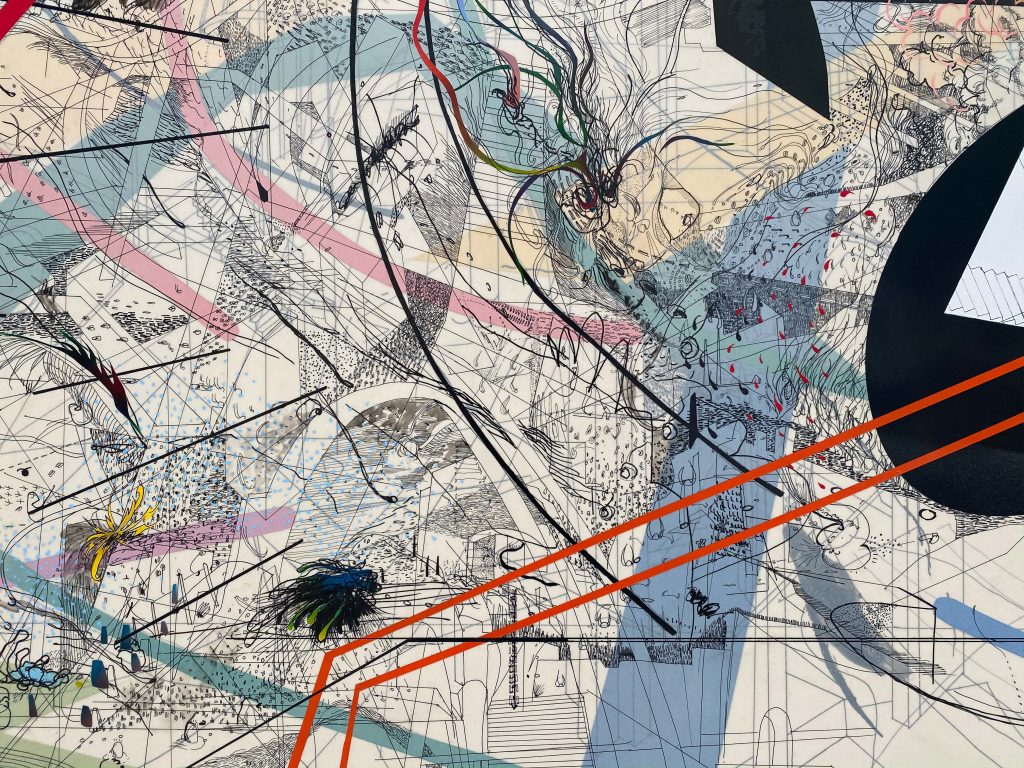
Get close to the canvas to see the layers of markings, and colors. You’ll discover all sorts of treasures in the tiny drawings, but then pull back for the elegantly balanced, energetic overall effect. 9/11
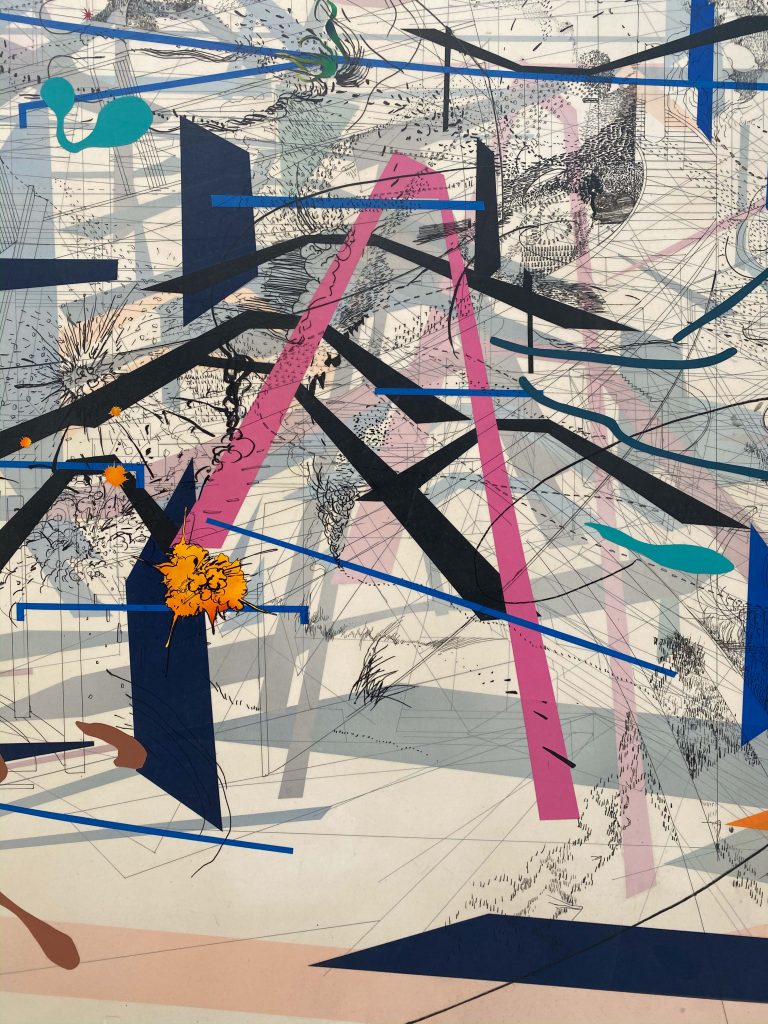
After being immersed in color paintings in the first several galleries, you’ll turn around in the large gallery and discover a floor to ceiling drawing of only gray scale markings – a study of the city of Berlin. It’s worth taking a seat to appreciate this massive work, and I wish that the images here could do justice to the intricate beauty of this piece.
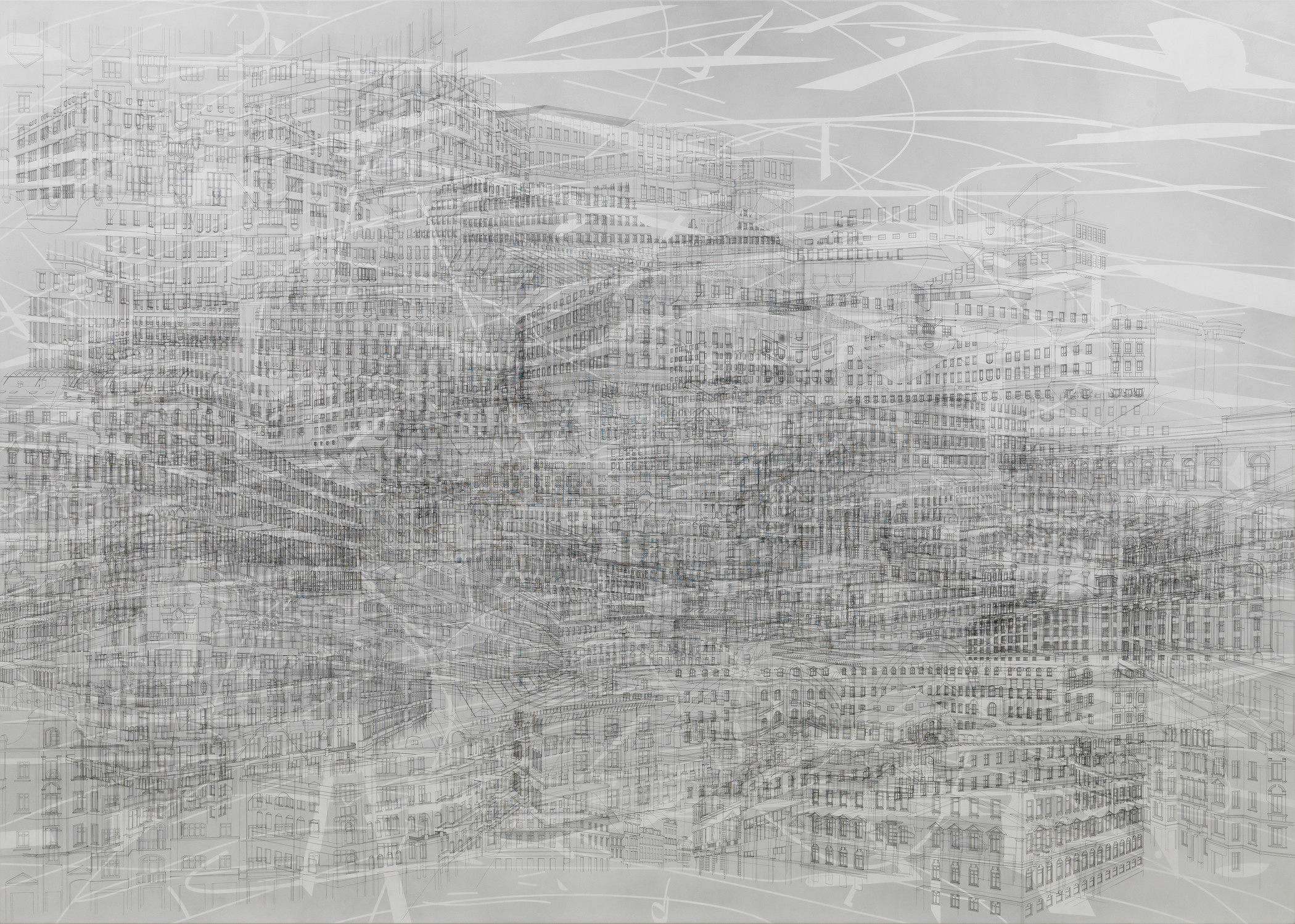
Julie Mehretu, Berliner Plätze, 2009, ink and acrylic on canvas, 119 1/8 × 167 1⁄4 in., commissioned by Deutsche Bank AG in consultation with the Solomon R. Guggenheim Foundation for the Deutsche Guggenheim, Berlin, © Julie Mehretu, photo © Solomon R. Guggenheim Foundation, New York, by Kristopher McKay
When you get up close, you won’t believe the complexity of the markings. For this work, she uses her signature technique of marking and then erasing and marking again, layering views of buildings in the city, tilting perspective and eye lines, with the resulting impression of being surrounded by buildings that are ages old.
More recent paintings are influenced by graffiti markings, and reflect the artist’s reactions to political uprisings around the world, such as riots in Ferguson, MI and the Arab Spring.
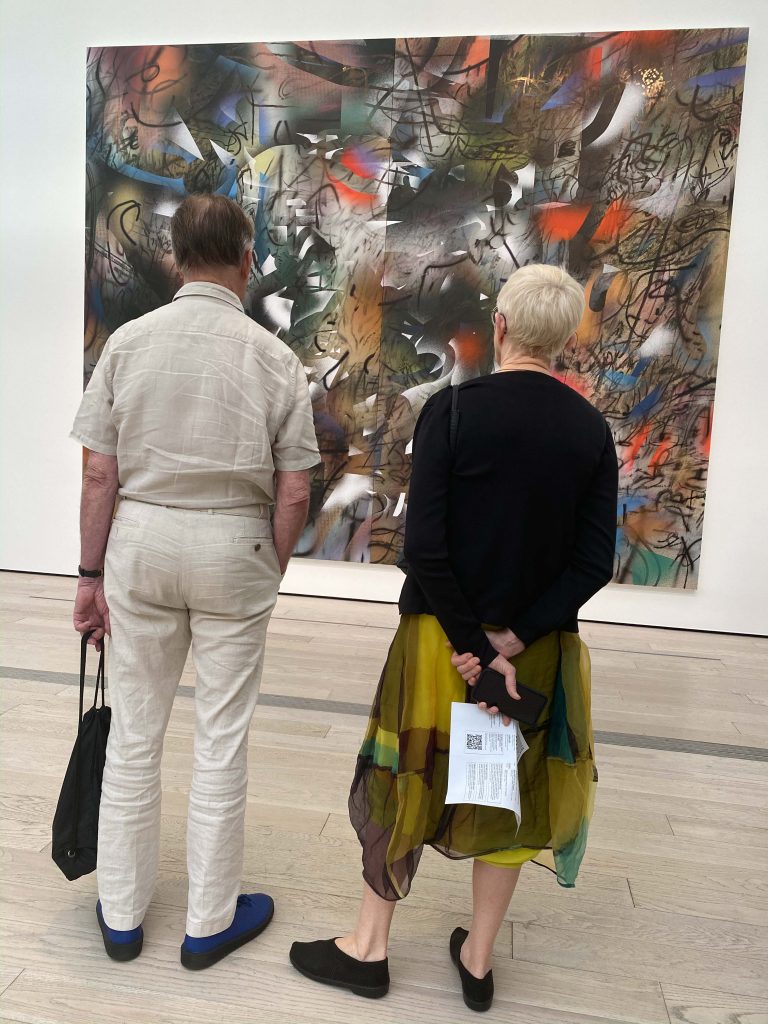
Julie Mehretu, Haka (and Riot), 2019, ink and acrylic on canvas, 144 × 180 in., courtesy of the artist and Marian Goodman Gallery, New York, © Julie Mehretu
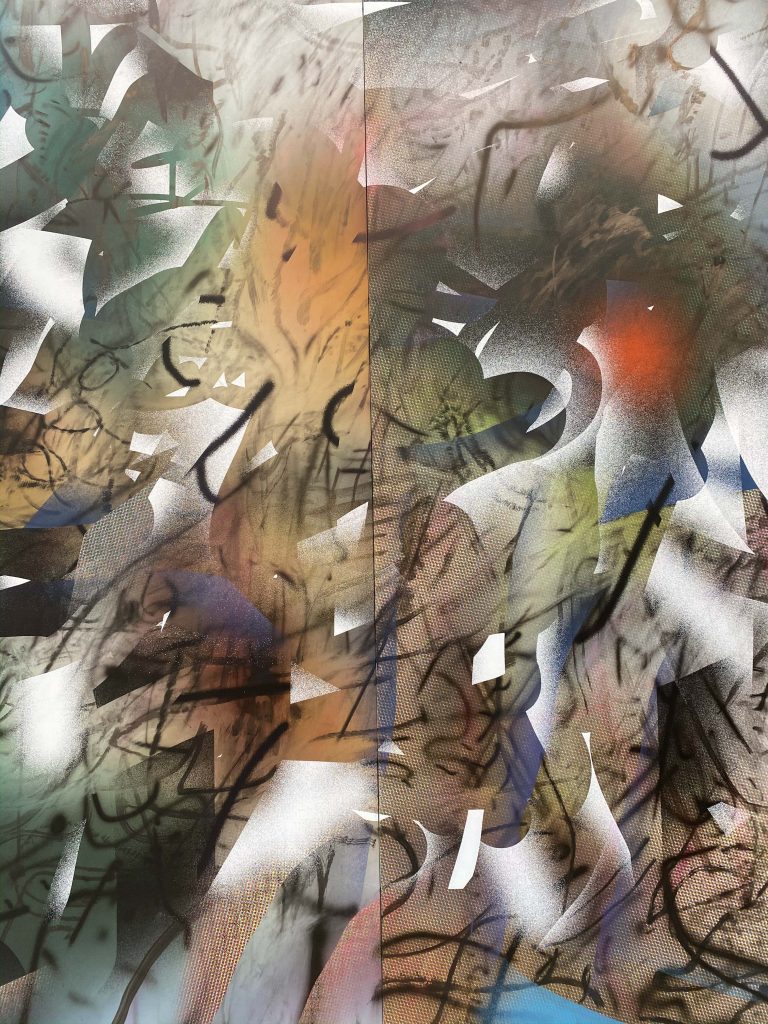
Here is our fabulous LACMA docent, Judy Schneider, going deep into the political messages in Julie’s more recent, colorful canvases – this one, a reaction to the wildfires in California.
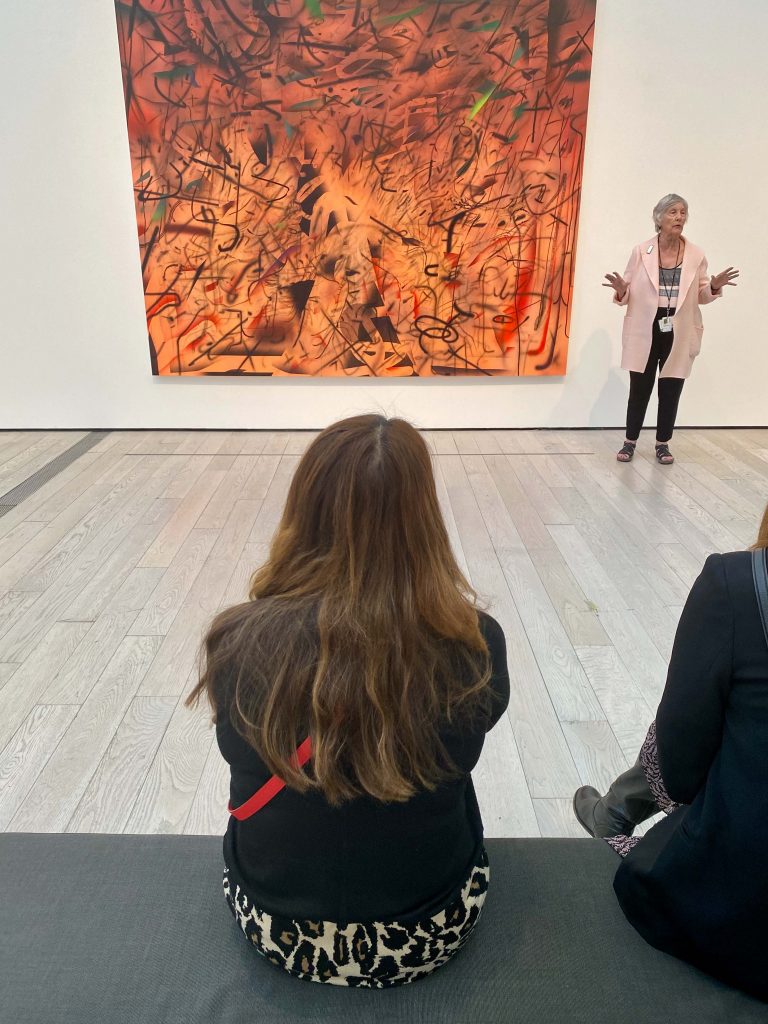
Julie Mehretu, Hineni (E. 3:4), 2018, ink and acrylic on canvas, 96 × 120 in., Centre Pompidou, Paris, Musée national d’art moderne/Centre de création industrielle; gift of George Economou, 2019, © Julie Mehretu
Downstairs, in a second gallery, are two additional rooms with monumental large floor to ceiling drawings – the slight bits of color balance and accentuate the intricacies of the drawing. What looks simple and balanced from afar is, in fact, busy and frenzied up close. The contrast is dazzling.
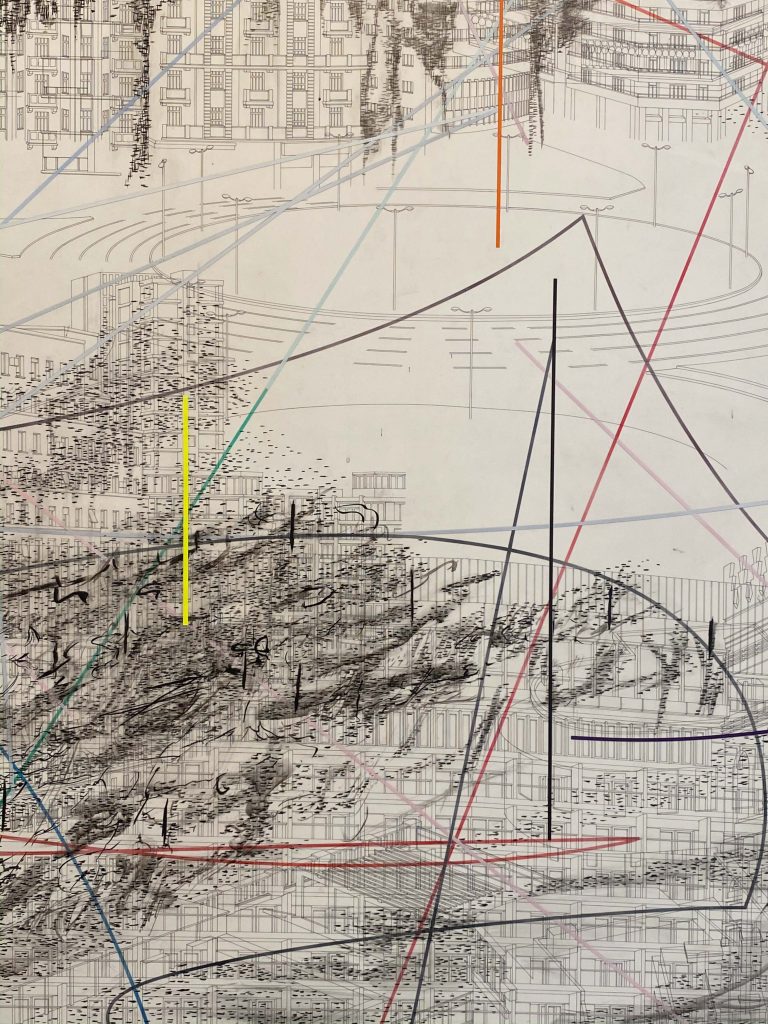
These paintings affect you on a visceral level – every one of us that visited the museum has returned to share the work with another friend. I wish this show were in town longer, but now you know – take every chance you have to see her work!

